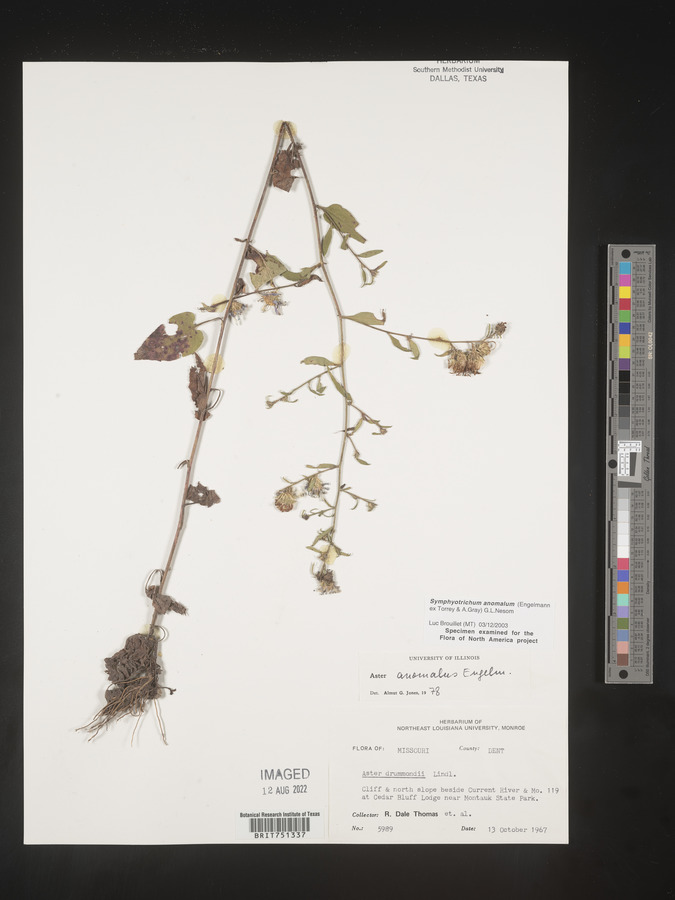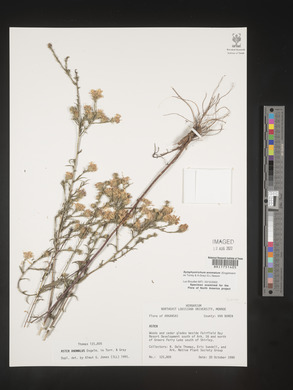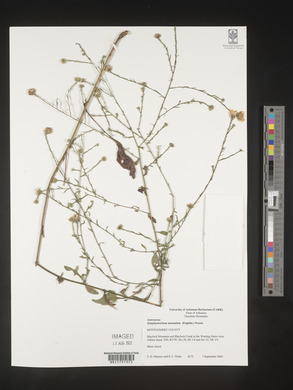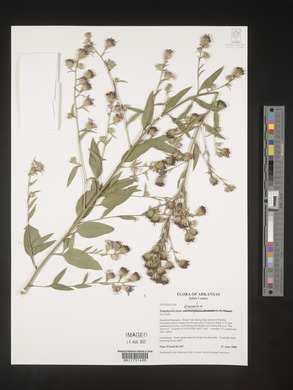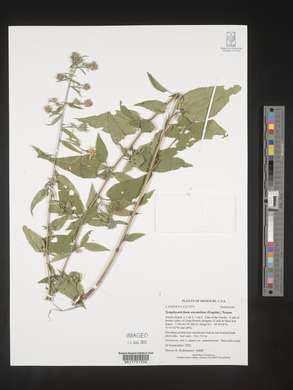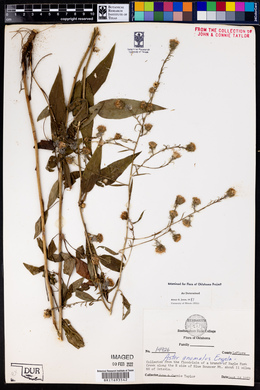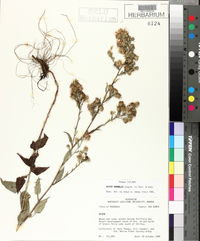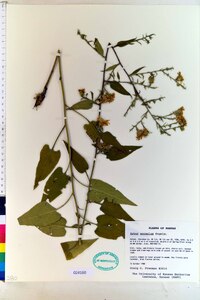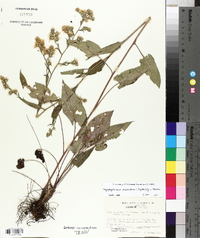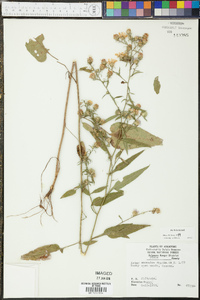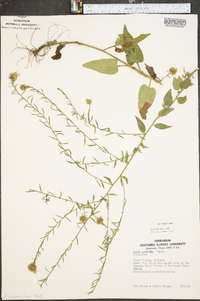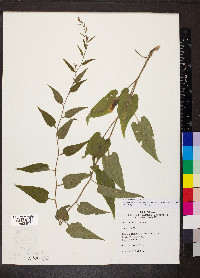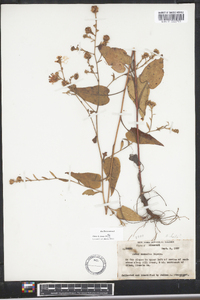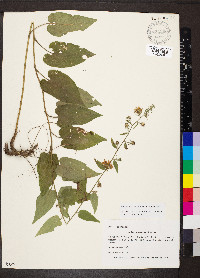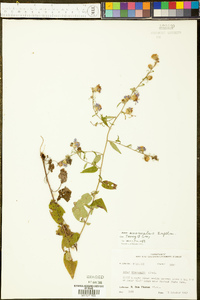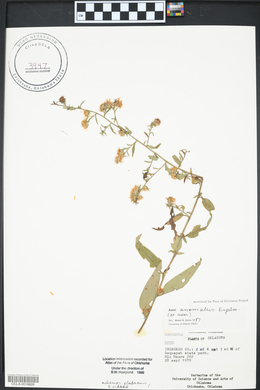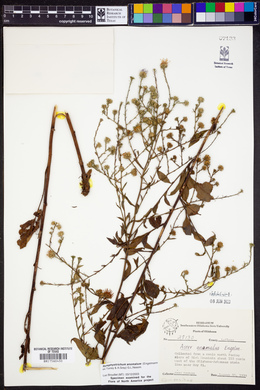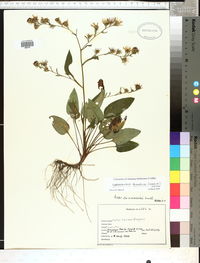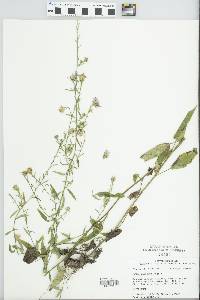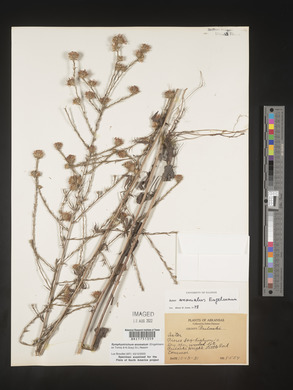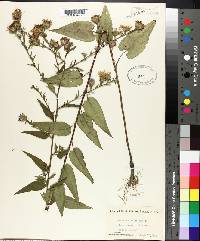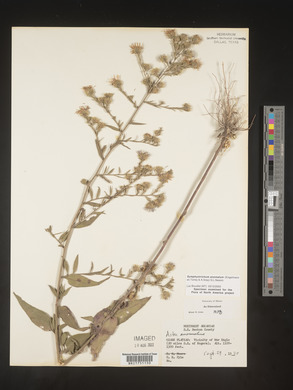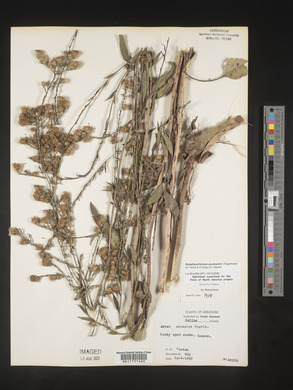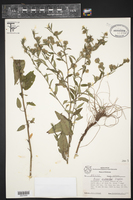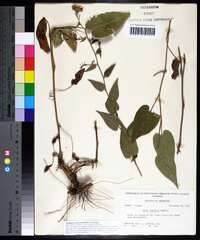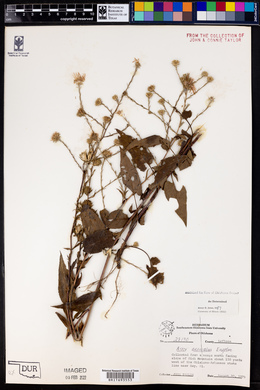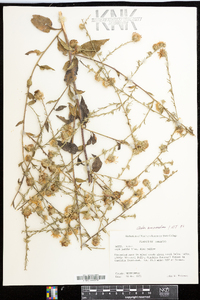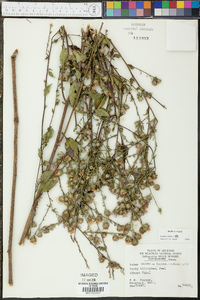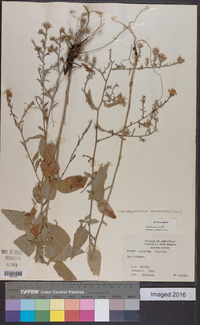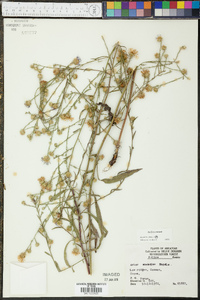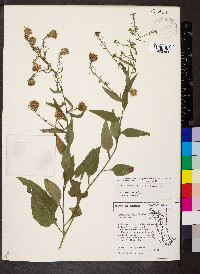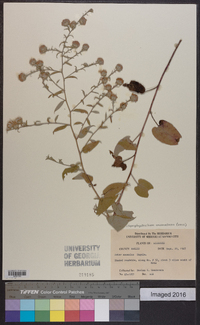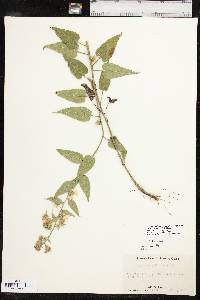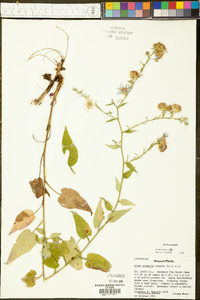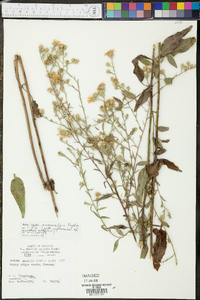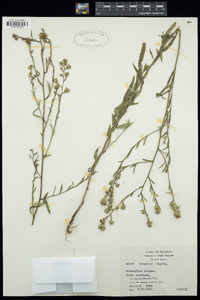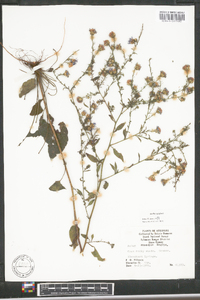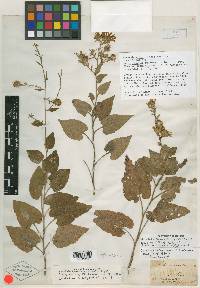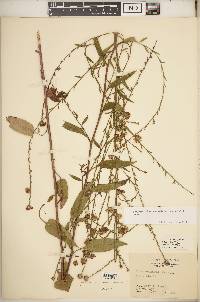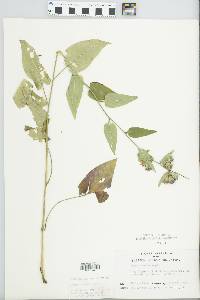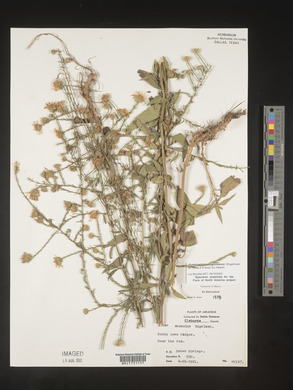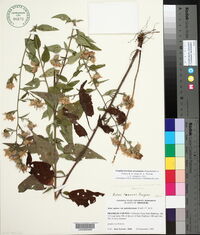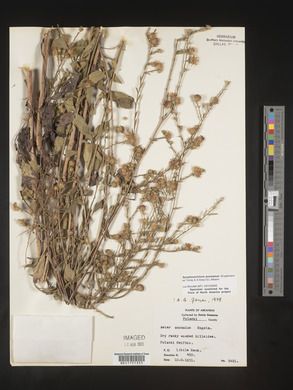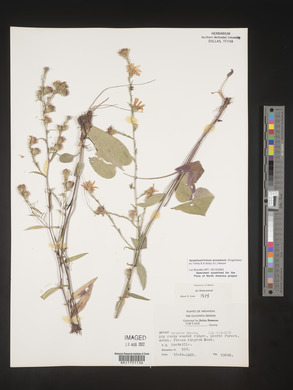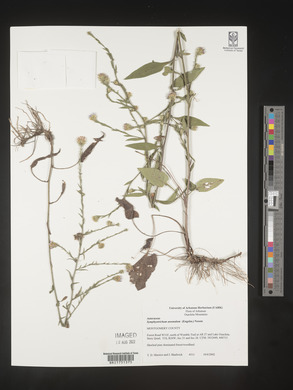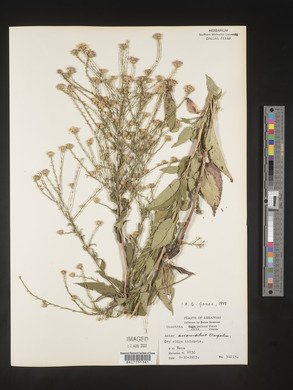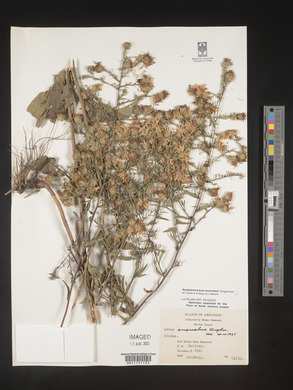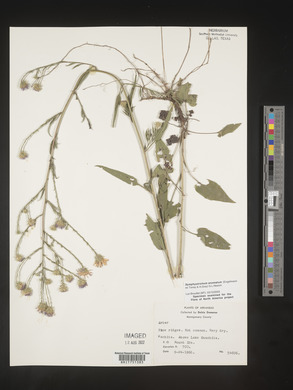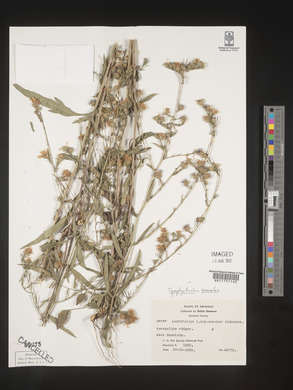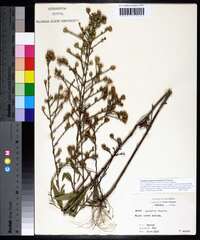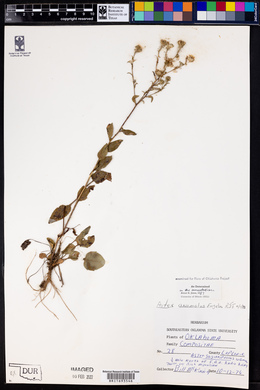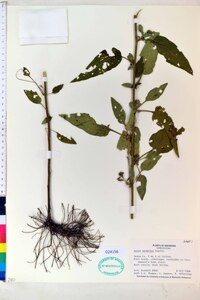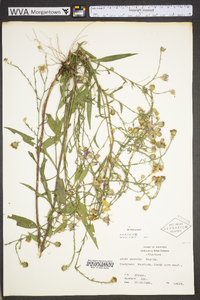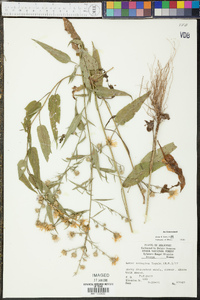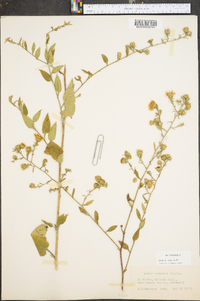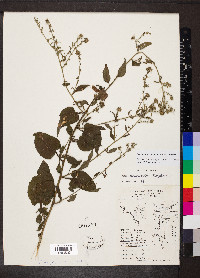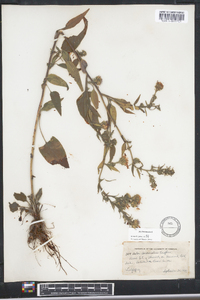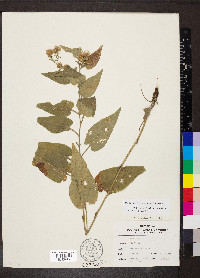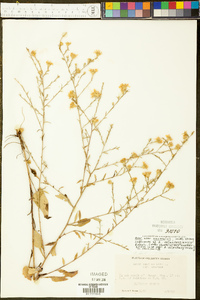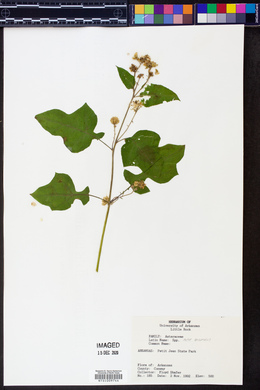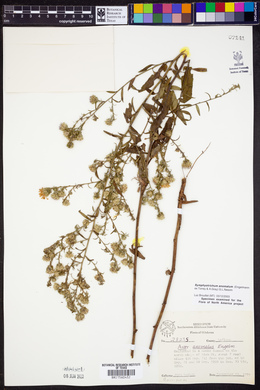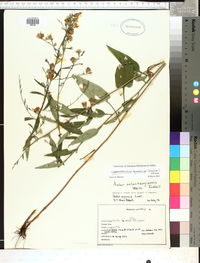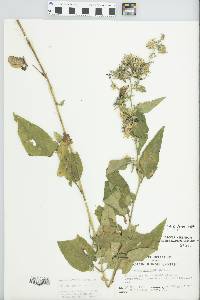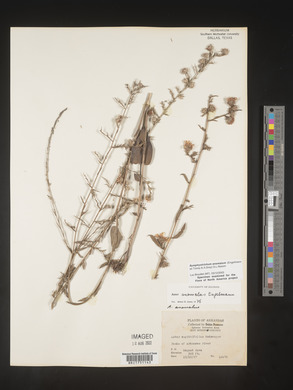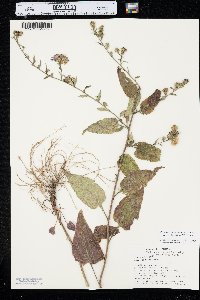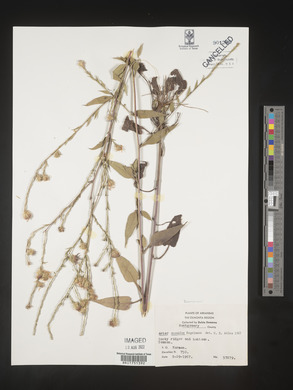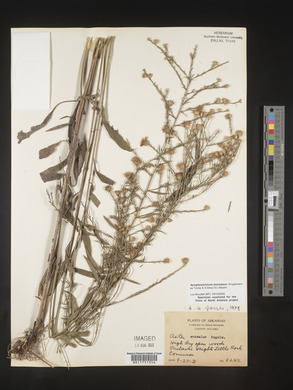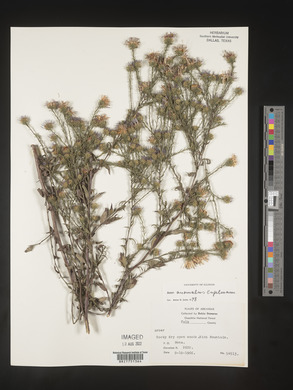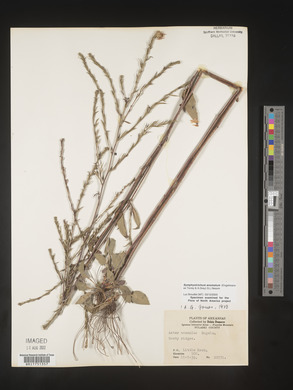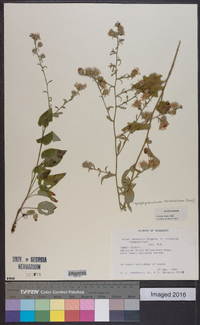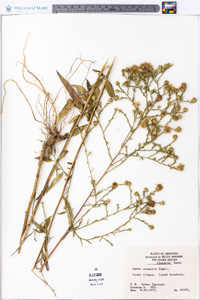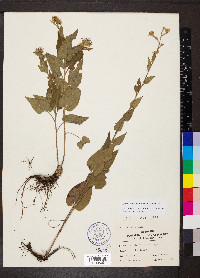Symphyotrichum anomalum
|
|
|
|
Family: Asteraceae
Many-Ray American-Aster, more...manyray aster
[Aster anomalus Engelm.] |
Perennials, 20-100(-120) cm, cespitose; usually with short, stout, branched caudices, woody with age, sometimes long-rhizomatous. Stems 1-5+, erect or ascending (straight, often stout), proximally usually ± densely hirtellous, sometimes glabrescent, distally hirsute. Leaves thick, firm, margins (slightly undulate) scabrous, adaxial faces glabrous or strigose, scabrous, adaxial ± sparsely hirsute to scabro-hirtellous, sometimes ± scabrous (cauline sometimes with tufts of smaller leaves in axils); basal withering by flowering, petiolate (petioles sometimes narrowly winged), blades oblong-ovate to lanceolate, 10-40 × 10-20 mm, bases deeply cordate, margins sparsely serrate to serrulate, apices usually acute, sometimes obtuse to rounded; proximal cauline usually withering by flowering, petiolate (petioles slender to ± winged), blades ovate to broadly lanceolate, 40-90 × (15-) 25-50 mm, bases shallowly cordate or rounded to attenuate, rarely truncate, margins subentire or entire (rarely serrulate), apices acute or acuminate, with short callus point; distal subpetiolate or sessile, blades ovate to lanceolate or linear-lanceolate, 10-70 × 1-10 mm, gradually or abruptly reduced distally, bases attenuate to cuneate, margins entire, apices acute to acuminate. Heads in open, diffuse, paniculiform arrays, branches divaricate, stout, long, densely bracteate. Peduncles densely bracteate, 0.3-5(-10) cm (rarely subsesssile), bracts numerous, linear, 2-6 mm, mucronulate, grading into phyllaries. Involucres campanulate, 5-10 mm. Phyllaries in 4-6 series, oblong-lanceolate (outer) to oblanceolate-linear (innermost), unequal, bases indurate (appressed), margins ciliate to scabro-ciliate, green zones diamond-shaped to lanceolate, ± foliaceous distally, apices reflexed to squarrose, long-acuminate, apiculate, often purple, faces strigoso-hirtellous. Ray florets 18-45; corollas usually bright lavender-blue to purple, seldom white, laminae 9-15(-18) × 1-3.2 mm. Disc florets 33-40+; corollas cream or light yellow turning pinkish purple, (4-)4.5-5.5 mm, tubes shorter than funnelform throats, lobes sometimes ± spreading, triangular to lanceolate, 0.5-0.8 mm. Cypselae deep purple to purplish brown or brown with purple speckles (nerves stramineous), oblong-obovoid, compressed, (1-)2.5-3.5(-3.8) mm, 5-6-nerved, faces glabrous; pappi tawny or rose-tinged, 3.7-5.2 mm. 2n = 16. Flowering late Aug-Oct. Dry, sandy, loamy, or clayey soils over limestone, or acid soils over chert, sandstone, or granite, rocky, open deciduous woods, thickets, dry ridges, cliffs, bluffs, occasional along streams; 50-500 m; Ark., Ill., Kans., Mo., Okla. A. G. Jones (1989, 1992) reported that Symphyotrichum anomalum may hybridize with S. drummondii, S. oolentangiense, and S. shortii.
Plants with a short, stout rhizome or branched caudex; stem 2-10 dm, pubescent with short, spreading, often coarse hairs, or merely scabrous; lvs thick and firm, scabrous-hirsute above, more loosely and softly hairy beneath, entire or nearly so, petiolate, the basal and lower cauline ovate or lanceolate, deeply cordate, 4-9 נ2-5.5 cm, the middle and upper gradually or abruptly reduced; infl open, paniculiform, with numerous narrow bracts, the bracteate peduncles often very long, invol 6-10 mm, short-hairy (subglabrous), the elongate, narrow, well imbricate bracts with reflexed green tip; rays 20-45, bright blue, 7-15 mm; achenes glabrous; 2n=16, ?18. Dry woods, usually associated with limestone; Ozark region from s. Ill. to e. Kans., Okla., and Ark. Gleason, Henry A. & Cronquist, Arthur J. 1991. Manual of vascular plants of northeastern United States and adjacent Canada. lxxv + 910 pp. ©The New York Botanical Garden. All rights reserved. Used by permission. |

